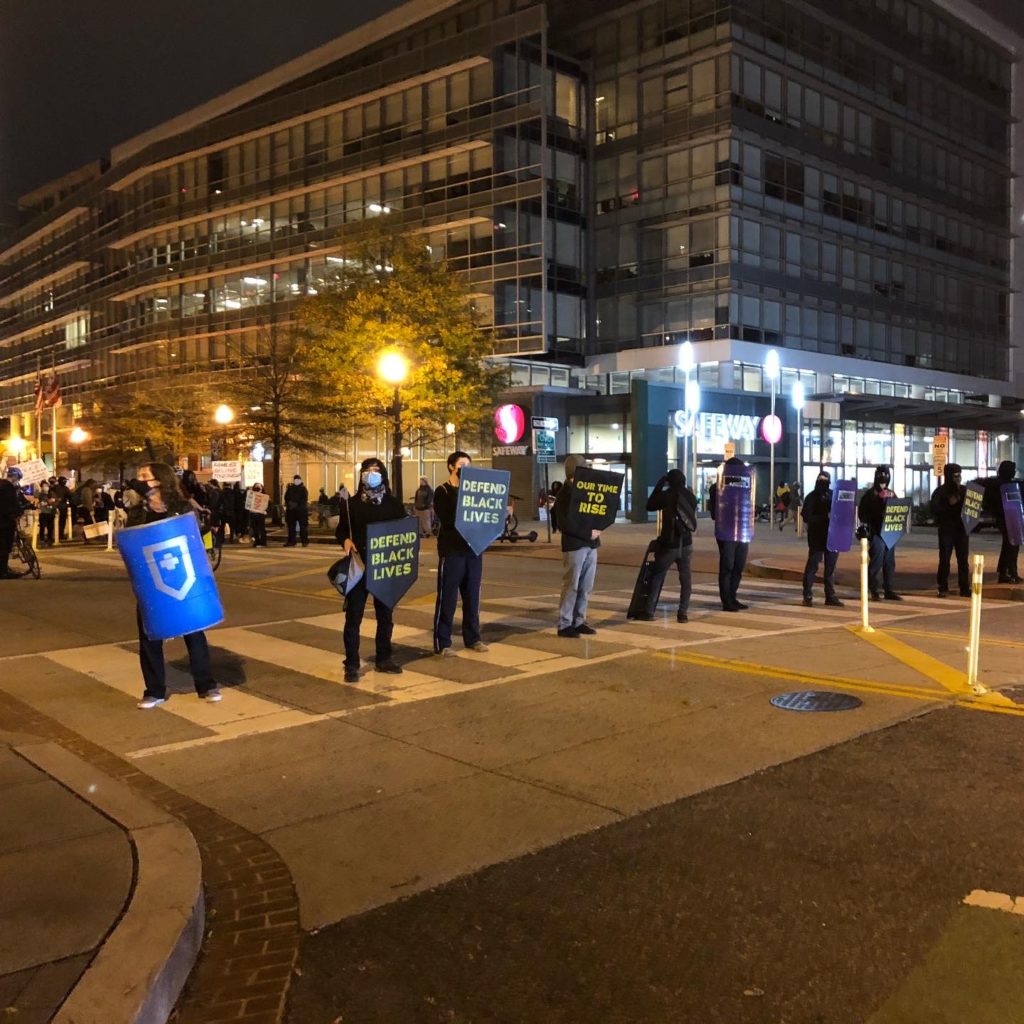By Matt Koehler

“Sanctuary not deportation!” Protesters chanted as they walked up 4th Street SW, before turning east on I Street towards South Capitol. CVS had boarded up all its windows, and all the newspaper dis- pensers outside the Waterfront Metro escalators had been removed to prevent vandalism. There was none.
A small but not insignificant “Abolish Ice” protest moved through Southwest on Saturday, Nov. 21, starting around 4 p.m. Protesters started just north of The Wharf and made their way down Main Avenue towards Waterfront Metro. Police blocked traffic ahead of and behind protesters as they made their way through the neighborhood.
This isn’t the first time protests have come through the relatively quiet Southwest Waterfront neighborhood. Earlier in the summer, hundreds of Southwesters gathered around the 4th & M Street intersection in solidarity against racism, police brutality, and in memory of George Floyd (The Southwester wrote about the protest in our July issue).
After noticing all the flashing lights from my 6th floor window, I ran out to talk to police officers and protesters at the 4th and M Street intersection outside Waterfront Metro, where the entire procession had stopped for about 30 minutes.
A few community members I came across thought it might be another MAGA rally, but a police officer I spoke to said it was an “Abolish Ice” protest, then smiled and admitted it was also for defunding the police. He told me that they do this protest every Saturday.
Protesters I spoke with also confirmed that this protest was, and is, pretty regular, but that they usually march around Dupont Circle. That Saturday, for various reasons, they came to SW.
I asked a few of the protesters who were sitting in the middle of the intersection why they were marching, and they raised issues of alleged forced hysterectomies, unsafe and abusive conditions at ICE detention centers, as well as police brutality.
While the rumor of widespread forced hysterectomies spread rapidly across the internet a few months ago, only less than two dozen of those surgeries have been reported. Of those, there appeared to be several that were either forced or against the victim’s knowledge.
More substantiated are the reports of abuse, rape, and neglect – especially since the beginning of the COVID-19 pandemic, where multiple media outlets have reported detainees not being able to get tested quick enough and not being allowed to social distance. There are also the well-documented cases and images of small children being separated from their parents at the border in 2018, and after.
One protester wore white pants painted red as a symbol of protest against the alleged forced hysterectomies being performed at ICE detention centers.
When I asked about police brutality, another protester talked about incidents that occurred over the summer where officers violently attacked peaceful protesters after the media went home, including one night when MPD appeared to ransack a medical supply area, as well as the infamous Lafayette Square incident. Furthermore, there are heightened tensions between community members and police after several high profile killings of young Black men throughout the summer.
Police officers blocked streets and quietly observed while protesters had their say.

A spectator I spoke with said, “This is such a quiet, sleepy neighborhood. Nothing happens here unless there’s an accident or a shooting. This [protest] is a nice change.”
Another Southwest resident told me she would have been inclined to join the protest if her young daughter hadn’t been with her.
The protest was peaceful compared to last weekend’s violence downtown, that exploded when pro-Trump protesters and the White Nationalist Proud Boys clashed with counter protesters in the streets of D.C. after the mostly peaceful Million MAGA March.
Down in Southwest, the community often seems far removed from all the highly televised political movements and clashes that happen just northwest and east of us. Perhaps this protest, like the one over the summer, reminds us that we are all part of the greater Washington D.C. community, and that we’re all connected.
I took leave of the protest as it made its way east down I Street. They had started chanting, “Who keeps us safe? We keep us safe!”
Walking home and reflecting on the brief spurt of activity in our “quiet and sleepy” part of D.C., it dawned on me that all protesters had worn their masks.

